



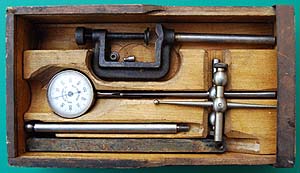
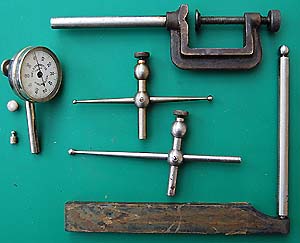
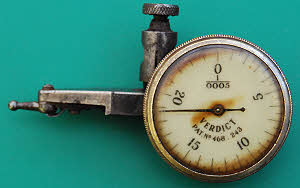
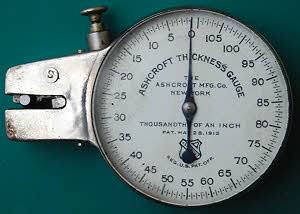
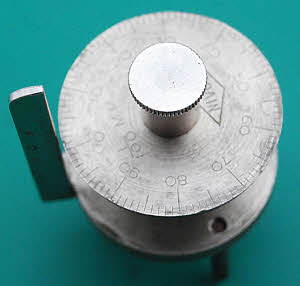
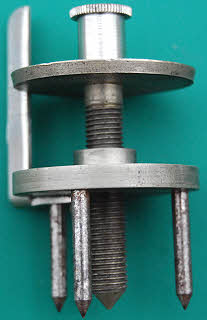
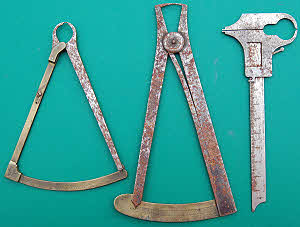
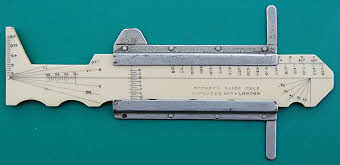
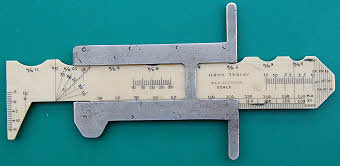
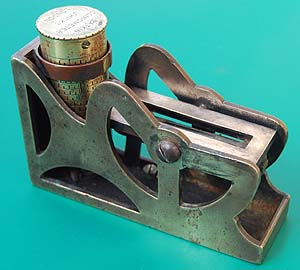
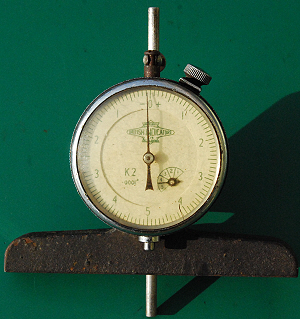
British Indicators (John Bull) depth dial gauge K2 measuring in thousandths of an inch. This particular one has been modified to give it a very restricted range, presumably for a special purpose.


Chesterman 4760 rustless steel printer’s rule made for E A Braddick Ltd, London. The upper face has an 8 point scale and an inch x 1/16ths scale. The lower face has scales for 6/12 points and 5/10 points.
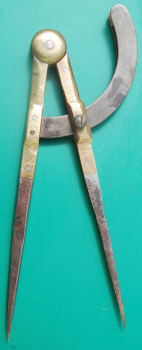
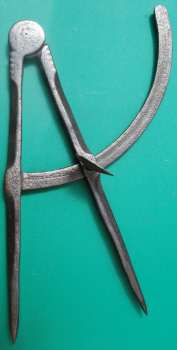
Two dividers. The left hand one is wrought iron,
11¼ inches long, and possibly dates
from the eighteenth century. It is possible it was originally longer and has been
shortened at some time.
The right hand one is brass and iron or steel and is probably 19th century, It is 7¾ inches long. The head joint has two steel leaves and the arc is actually two pieces of steel. The machine screw to clamp on the arc is a replacement for the original wing screw. The brass and iron/steel parts are held together with iron rivets.
I think the iron ones would probably have belonged to a stone mason.

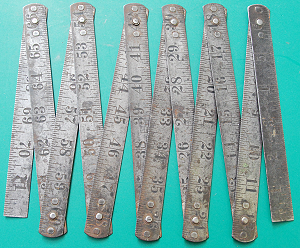
Lufkin Rules Co six foot 12 fold steel rule. Both faces are graduated in inches and sixteenths
Below: J Rabone & Sons 2ft 2 fold brass rule graduated inches & eighths one side and inches & sixteenths on the other

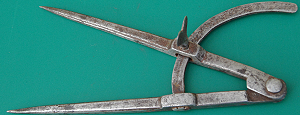
Lancashire pattern dividers 9 inches long, wrought iron and probably 19th century.
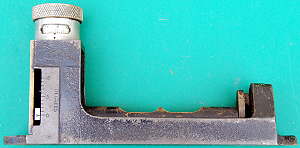
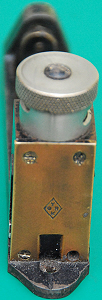
Engineer’s clinometer level of the Air Ministry pattern with the letters Y O R K arranged in a diamond on the vertical, brass face plate. Measures from 0 to 10 degrees to 1 minute of arc. Probably made by Mechanism Ltd. Croydon in the 1930s/1940s.
The level tube is raised/depressed by rotating the micrometer drum
| Early Sets |
| Traditional Sets |
| Later Sets |
| Major Makers |
| Instruments |
| Miscellanea |
| W F Stanley |
| A G Thornton |
| W H Harling |
| Elliott Bros |
| J Halden |
| Riefler |
| E O Richter |
| Kern, Aarau |
| Keuffel & Esser |
| Compasses |
| Pocket compasses |
| Beam compasses |
| Dividers |
| Proportional dividers |
| Pens |
| Pencils |
| Rules |
| Protractors |
| Squares |
| Parallels |
| Pantographs |
| Sectors |
| Planimeters |
| Map Measurers |
| Miscellaneous |
| Materials Used |
| Who made them |
| Who made these |
| Addiator |
| Addimult |
| Other German |
| USA |
| Miscellaneous |
| Microscopes |
| Barometers |
| Hydrometers & Scales |
| Pedometers |
| Surveying Instruments |
| Other instruments |
| Workshop Measuring Tools |
| Catalogues & Brochures |
| Levels & Theodolites |
| Compasses & Clinometers |
| Miscellaneous surveying |
| Micrometers & Verniers |
| Engineering rules and gauges |
| Wood rules & calipers |
| Dial gauges & miscellaneous |